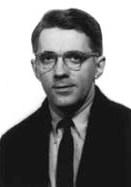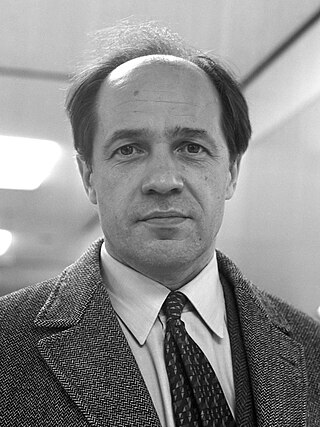Related Research Articles

Musical composition can refer to an original piece or work of music, either vocal or instrumental, the structure of a musical piece or to the process of creating or writing a new piece of music. People who create new compositions are called composers. Composers of primarily songs are usually called songwriters; with songs, the person who writes lyrics for a song is the lyricist. In many cultures, including Western classical music, the act of composing typically includes the creation of music notation, such as a sheet music "score", which is then performed by the composer or by other musicians. In popular music and traditional music, songwriting may involve the creation of a basic outline of the song, called the lead sheet, which sets out the melody, lyrics and chord progression. In classical music, orchestration is typically done by the composer, but in musical theatre and in pop music, songwriters may hire an arranger to do the orchestration. In some cases, a pop or traditional songwriter may not use written notation at all and instead compose the song in their mind and then play, sing or record it from memory. In jazz and popular music, notable sound recordings by influential performers are given the weight that written or printed scores play in classical music.

David Eugene Tudor was an American pianist and composer of experimental music.

John Milton Cage Jr. was an American composer and music theorist. A pioneer of indeterminacy in music, electroacoustic music, and non-standard use of musical instruments, Cage was one of the leading figures of the post-war avant-garde. Critics have lauded him as one of the most influential composers of the 20th century. He was also instrumental in the development of modern dance, mostly through his association with choreographer Merce Cunningham, who was also Cage's romantic partner for most of their lives.

Pierre Louis Joseph Boulez was a French composer, conductor and writer, and the founder of several musical institutions. He was one of the dominant figures of post-war contemporary classical music.

Aleatoricmusic is music in which some element of the composition is left to chance, and/or some primary element of a composed work's realization is left to the determination of its performer(s). The term is most often associated with procedures in which the chance element involves a relatively limited number of possibilities.
Aleatoricism or aleatorism, the noun associated with the adjectival aleatory and aleatoric, is a term popularised by the musical composer Pierre Boulez, but also Witold Lutosławski and Franco Evangelisti, for compositions resulting from "actions made by chance", with its etymology deriving from alea, Latin for "dice". It now applies more broadly to art created as a result of such a chance-determined process. The term was first used "in the context of electro-acoustics and information theory" to describe "a course of sound events that is determined in its framework and flexible in detail", by Belgian-German physicist, acoustician, and information theorist Werner Meyer-Eppler. In practical application, in compositions by Mozart and Kirnberger, for instance, the order of the measures of a musical piece were left to be determined by throwing dice, and in performances of music by Pousseur, musicians threw dice "for sheets of music and cues". However, more generally in musical contexts, the term has had varying meanings as it was applied by various composers, and so a single, clear definition for aleatory music is defied. Aleatory should not be confused with either indeterminacy, or improvisation.

Cornelius Cardew was an English experimental music composer, and founder of the Scratch Orchestra, an experimental performing ensemble. He later rejected experimental music, explaining why he had "discontinued composing in an avantgarde idiom" in his own programme notes to his Piano Album 1973.

Christian G. Wolff is an American composer of experimental classical music and classicist.

4′33″ is a modernist composition by American experimental composer John Cage. It was composed in 1952 for any instrument or combination of instruments; the score instructs performers not to play their instruments throughout the three movements. It is divided into three movements, lasting 30 seconds, two minutes and 23 seconds, and one minute and 40 seconds, respectively, although Cage later stated that the movements' durations can be determined by the musician. As indicated by the title, the composition lasts four minutes and 33 seconds and is marked by a period of silence, although ambient sounds contribute to the performance.
Graphic notation is the representation of music through the use of visual symbols outside the realm of traditional music notation. Graphic notation became popular in the 1950s, and can be used either in combination with or instead of traditional music notation. Graphic notation was influenced by contemporary visual art trends in its conception, bringing stylistic components from modern art into music. Composers often rely on graphic notation in experimental music, where standard musical notation can be ineffective. Other uses include pieces where an aleatoric or undetermined effect is desired. One of the earliest pioneers of this technique was Earle Brown, who, along with John Cage, sought to liberate performers from the constraints of notation and make them active participants in the creation of the music.

In music, modernism is an aesthetic stance underlying the period of change and development in musical language that occurred around the turn of the 20th century, a period of diverse reactions in challenging and reinterpreting older categories of music, innovations that led to new ways of organizing and approaching harmonic, melodic, sonic, and rhythmic aspects of music, and changes in aesthetic worldviews in close relation to the larger identifiable period of modernism in the arts of the time. The operative word most associated with it is "innovation". Its leading feature is a "linguistic plurality", which is to say that no one music genre ever assumed a dominant position.
Inherent within musical modernism is the conviction that music is not a static phenomenon defined by timeless truths and classical principles, but rather something which is intrinsically historical and developmental. While belief in musical progress or in the principle of innovation is not new or unique to modernism, such values are particularly important within modernist aesthetic stances.
Earle Brown was an American composer who established his own formal and notational systems. Brown was the creator of "open form," a style of musical construction that has influenced many composers since—notably the downtown New York scene of the 1980s and generations of younger composers.
Howard While Skempton is an English composer, pianist, and accordionist.
French classical music began with the sacred music of the Roman Catholic Church, with written records predating the reign of Charlemagne. It includes all of the major genres of sacred and secular, instrumental and vocal music. French classical styles often have an identifiably national character, ranging from the clarity and precision of the music of the late Renaissance music to the sensitive and emotional Impressionistic styles of the early 20th century. Important French composers include Pérotin, Machaut, Du Fay, Ockeghem, Josquin, Lully, Charpentier, Couperin, Rameau, Leclair, Grétry, Méhul, Auber, Berlioz, Alkan, Gounod, Offenbach, Franck, Lalo, Saint-Saëns, Delibes, Bizet, Chabrier, Massenet, Widor, Fauré, d'Indy, Chausson, Debussy, Dukas, Vierne, Duruflé, Satie, Roussel, Hahn, Ravel, Honegger, Milhaud, Poulenc, Auric, Messiaen, Françaix, Dupré, Dutilleux, Xenakis, Boulez, Guillou, Grisey, and Murail.
Pierre Boulez composed three piano sonatas: the First Piano Sonata in 1946, the Second Piano Sonata in 1947–48, and the Third Piano Sonata in 1955–57 with further elaborations up to at least 1963, though only two of its movements have been published.
Experimental music is a general label for any music or music genre that pushes existing boundaries and genre definitions. Experimental compositional practice is defined broadly by exploratory sensibilities radically opposed to, and questioning of, institutionalized compositional, performing, and aesthetic conventions in music. Elements of experimental music include indeterminacy, in which the composer introduces the elements of chance or unpredictability with regard to either the composition or its performance. Artists may approach a hybrid of disparate styles or incorporate unorthodox and unique elements.
Music of Changes is a piece for solo piano by John Cage. Composed in 1951 for pianist and friend David Tudor, it is a ground-breaking piece of indeterminate music. The process of composition involved applying decisions made using the I Ching, a Chinese classic text that is commonly used as a divination system. The I Ching was applied to large charts of sounds, durations, dynamics, tempo and densities.
American avant-garde composer John Cage (1912–1992) began composing pieces for solo prepared piano around 1938–40. The majority of early works for this instrument were created to accompany dances by Cage's various collaborators, most frequently Merce Cunningham. In response to frequent criticisms of prepared piano, Cage cited numerous predecessors. In the liner notes for the very first recording of his most highly acclaimed work for prepared piano, Sonatas and Interludes, Cage wrote: "Composing for the prepared piano is not a criticism of the instrument. I'm only being practical." This article presents a complete list of Cage's works for prepared piano, with comments on each composition. All of Cage's indeterminate works for unspecified forces can also be performed on or with Prepared Piano.
Source: Music of the Avant-Garde – also known and hereafter referred to as Source Magazine – was an independent, not-for-profit musical and artistic magazine published between 1967 and 1973 by teachers and students of the University of California, Davis, California. It emerged from the flourishing Californian musical experimentalism of the late 1950s-early 1960s, at UC-Davis and Mills College. The 11 issues document new music practices of the period like indeterminacy, performance, graphic scores, electronic music and intermedia arts.

Refrain for three players is a chamber music composition by Karlheinz Stockhausen, and is number 11 in his catalog of works.
References
Sources
- Abel, Iebele. 2013. Manifestations of Mind in Matter. Princeton: ICRL Press. ISBN 978-1-936033-07-2.
- Anderson, Virginia. 2006. "Well, It's a Vertebrate …": Performer Choice in Cardew's Treatise. Journal of Musicological Research. 5, (3-4): 291-317. doi:10.1080/01411890600840578 .
- Boulez, Pierre. 1957. "Aléa". La Nouvelle Revue française , no. 59 (1 November): 839–857.
- Cage, John. 1961. Silence: Lectures and Writings. Middletown, Connecticut: Wesleyan University Press.
- Joe, Jeongwon, and S. Hoon Song. 2002. "Roland Barthes' 'Text' and Aleatoric Music: Is the Birth of the Reader the Birth of the Listener?". Muzikologija 2:263–281.
- Maconie, Robin. 2005. Other Planets: The Music of Karlheinz Stockhausen . Lanham, Maryland, Toronto, and Oxford: The Scarecrow Press. ISBN 0-8108-5356-6.
- Peyser, Joan. 2008. To Boulez and Beyond, revised edition. Lanham, Maryland: Scarecrow Press. ISBN 978-0-8108-5877-0.
- Pritchett, James. 1993. The Music of John Cage. Music in the 20th Century. Cambridge, New York, Melbourne: Cambridge University Press. ISBN 0-521-41621-3 (cloth); ISBN 0-521-56544-8 (pbk).
- Rae, Charles Bodman. 2001. "Lutosławski, Witold (Roman)". The New Grove Dictionary of Music and Musicians , second edition, edited by Stanley Sadie and John Tyrrell. London: Macmillan
- Simms, Bryan R. 1986. Music of the Twentieth Century: Style and Structure. New York: Schirmer Books; London: Collier Macmillan. ISBN 0-02-872580-8.